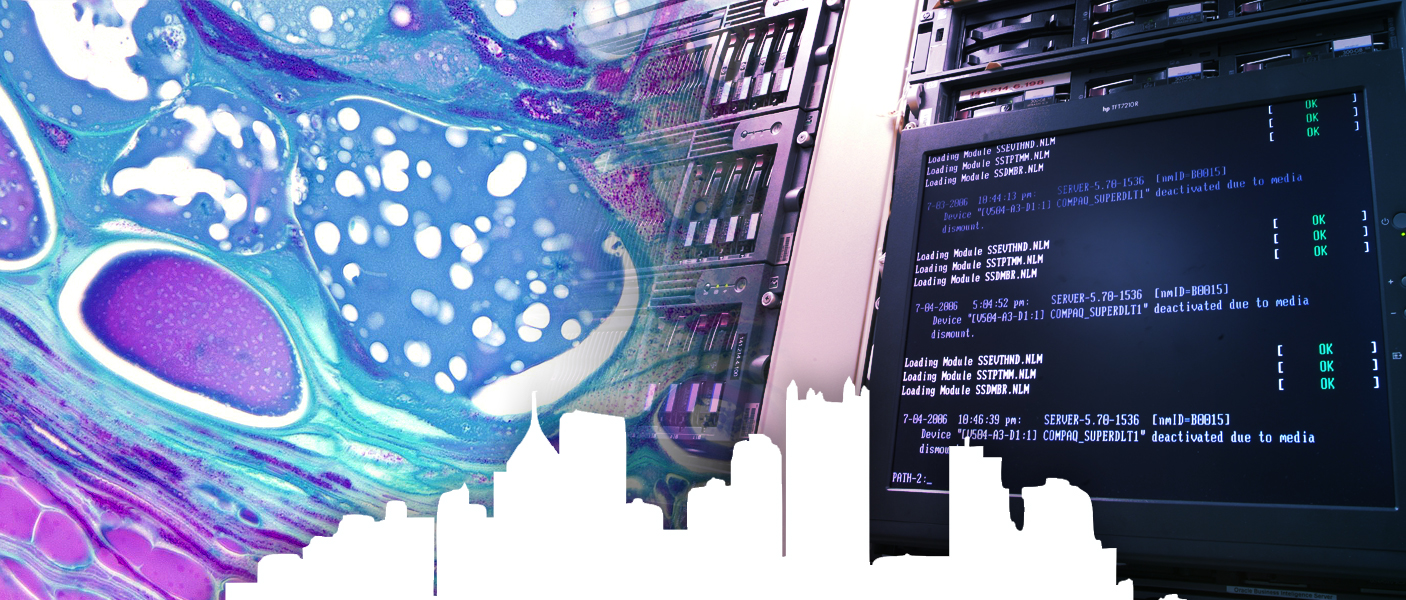

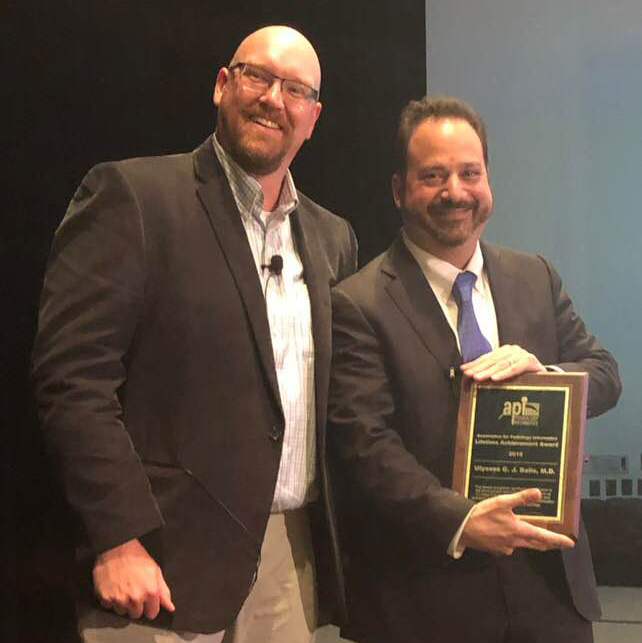 President of API, Dr. David McClintock (left) and Dr. Ul Balis (right) receiving the 2018 API Lifetime Achievement Award. | Photo from Association for Pathology Informatics / Twitter @apipathbytesWhat is the one national meeting where physicians, researchers, graduate students, residents, industry developers, engineers, imaging professionals, vendors, and anyone interested in how informatics and imaging are changing pathology gather to learn the latest developments in the field? The easy answer is the Pathology Informatics Summit 2018, which was held May 21-24 in Pittsburgh, PA.
President of API, Dr. David McClintock (left) and Dr. Ul Balis (right) receiving the 2018 API Lifetime Achievement Award. | Photo from Association for Pathology Informatics / Twitter @apipathbytesWhat is the one national meeting where physicians, researchers, graduate students, residents, industry developers, engineers, imaging professionals, vendors, and anyone interested in how informatics and imaging are changing pathology gather to learn the latest developments in the field? The easy answer is the Pathology Informatics Summit 2018, which was held May 21-24 in Pittsburgh, PA.
This year the Summit was extremely meaningful for Michigan Medicine for several reasons. The Association for Pathology Informatics (API) awarded our own Dr. Ulysses Balis, U-M Professor of Pathology and Director of the Division of Pathology Informatics, the 2018 API Lifetime Achievement Award for his continual and exemplary support of and tireless work on behalf of the field of Pathology Informatics. The Award was established to recognize persons who have made significant contributions to the development of pathology informatics as a clinical and academic subspecialty of pathology. We offer our sincere congratulations to Dr. Balis.

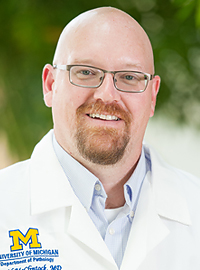
This 9th annual symposium was sponsored by the Division of Informatics, Department of Pathology at the University of Michigan, the Informatics Unit of Henry Ford Health System and the Department of Biomedical Informatics at the University of Pittsburgh. As such, multiple of our U-M Department of Pathology faculty and staff played pivotal roles in shaping this year’s meeting. Dr. Balis, served as this year’s Conference Director. As such, his roles included arranging for all meeting logistics and for leading the programming team in selecting a panel of world-class presenters on contemporary Pathology Informatics Topics. Assisting him as Conference co-director was Henry Ford Health System’s Director of Pathology Informatics, Dr. J. Mark Tuthill. Additional faculty rounding out the meeting support team included Dr. David McClintock, who is the current API Council President, Associate Professor of Pathology Dr. Sandra Camelo-Piragua who delivered one of the keynote talks, entitled, “Raman Backscatter Microscopy: a New Tool for Practicing Surgical Pathologists” and Active Professor Emeritus Dr. Bruce Friedman. Ms. Beth Gibson served as the Conference Manager and Membership Coordinator, who along with Nova Smith of the University of Pittsburgh, organized all the details of the meeting from the abstract submissions, CME and SAMS credits to speakers arrangements, and troubleshooting any and all-conference problems. Mr. John Hamilton and Mr. Brian Royer provided cutting-edge IT coverage at the meeting and assisted in the preparation of conference recordings, which will be available to meeting participants and API members.
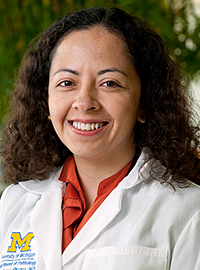
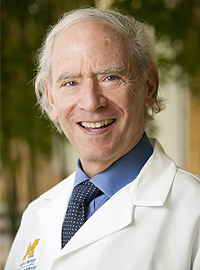
Historically, this conference has its roots in preceding information technology conferences dating back to 1983 through 2003, in both Ann Arbor and Las Vegas, when the AIMCL (later known as Lab Infotech Summit) would annually convene. In 2000 the Association for Pathology Informatics (API) was founded to help define pathology informatics as a formally boarded clinical subspecialty. The API previously co-sponsored two meetings a year, one organized by Dr. Michael Becich, at the University of Pittsburgh, and the other being the Lab Infotech Summit directed by U-M’s Dr. Bruce Friedman. In 2010 the two meetings merged, creating a single, national Pathology informatics Summit. The U-M and Henry Ford Health Centers alternate conference leadership roles every two years and have made this the singularly most important national Pathology Informatics (PI) symposium, which appeals to all audiences who hold any interest in the combined fields of Pathology Informatics and Clinical Laboratory informatics.
The goal of this symposium has always been to foster the sharing and dissemination of timely informatics knowledge in pursuit of excellence in the specialty, while similarly inspiring the many trainees who attended the meeting to consider a career in informatics. The subspecialty of Pathology Informatics (PI) is growing rapidly, and a significant mission of this Summit was the offering of updated educational material concerning developments in PI to a worldwide audience. With over 300 attendees, it was the largest group of PI experts in the world, all speaking the same language.
Residents and graduate students are vital to the PI Summit mission, as they train and prepare for the future. As such, the Program Directors made a concerted effort to offer special travel award grants to Pathology programs across the country to facilitate attendance by trainees interested in learning about careers in Informatics.
This year’s Summit featured two program tracks – Applied Informatics (including Digital Pathology) and Research Informatics. One of the features making this unique Summit the most comprehensive meeting of its kind, worldwide, was the inclusion of three pre-meeting workshops, where attendees participated in Pathology Informatics Boot Camp, and two companion society meetings: the HIMA Imaging Science workshop and the Digital Pathology Association’s Annual Update. Additionally, this year’s meeting offered a unique event, embedded on the vendor exhibit floor, The Whole Slide Imaging (WSI) “Connectathon.” Sponsored by internationally renowned experts in medical image interoperability, the Connectathon provided an opportunity for meeting attendees to personally observe the highly evolved state of image and case interoperability across disparate WSI vendors present at the meeting.
In addition to lectures, panel discussions, town hall sessions, there was also elevated platform presentations, selected from the most compelling abstract submissions.
In his role as API president, Dr. McClintock assisted the programming committee with speaker selection and with securing of additional travel grant funding for students. When asked what he found most exciting about this year’s meeting, Dr, McClintock offered that the topics of Computational Pathology, Machine Learning, and Image Analysis were all transformative technologies that each hold great potential to significantly impact the practice of Pathology.
With the recent FDA approval of whole slide imaging for use in primary diagnostic settings, the topic of image analysis, as made possible by use of novel computational algorithms, shows great promise for enhancing pathologists’ diagnostic and prognostic capabilities. The meeting also showcased new microscopy technologies, such as light-sheet microscopy and near-IR Raman microscopy.
Dr. McClintock further offered that it is not the goal of Informatics to replace pathologists, but rather, for it to add value to the overall pathology workflow process, thereby improving quality, decreasing turn-around time, and helping pathologists with particularly challenging cases.
If the idea of all digital primary diagnosis by use of whole slide imaging seems unlikely, consider the fact that the most compelling ideas of merely five to ten years ago (e.g. bar-code tracking, optimization of LIS, analysis of big data) are now relatively mundane by comparison. Indeed, the field of Pathology Informatics is moving ahead at blinding speed.
Michigan is well-positioned to maintain its role as a global leader in Pathology Informatics, with an unusually large academic appointment of three full-time faculty, who are NIH funded and provide more than 40 invited lectures per year, at the national and international levels. In addition, Michigan Pathology’s Division of Informatics is fortunate to have its own team serving all areas of Information Technology stewardship, including desktop support, development and maintenance of computational research pipelines, operation of all aspects of the department’s laboratory information system, as well as the stewardship of a Petascale data center, in support of its own computational research activities.
Summit Director, Dr. Ul Balis, commented that Pathology Informatics as a field is entering what could only be called a new Renaissance period, where new diagnostic and prognostic insights can be extracted via the cogent use of new machine learning and image classification / deep learning tools – tools that will be transformative to new approaches that will ultimately yield troves of medically actionable data that are currently locked away deep within the lab results currently reported by contemporary conventional analytical methods.
How will pathologists work in the future? How will the workflow of generating diagnoses evolve? How will the use of microscopy transform into a digital workflow model? The 2018 Pathology Informatics Summit was an exceptional place to stay abreast of these questions and this dynamic field, in all its many exciting variations. The future is now. The Summit provided those seeking illumination, inspiration, and collaboration a great opportunity to not only glimpse but help shape the future. May 21-24, Pittsburgh.